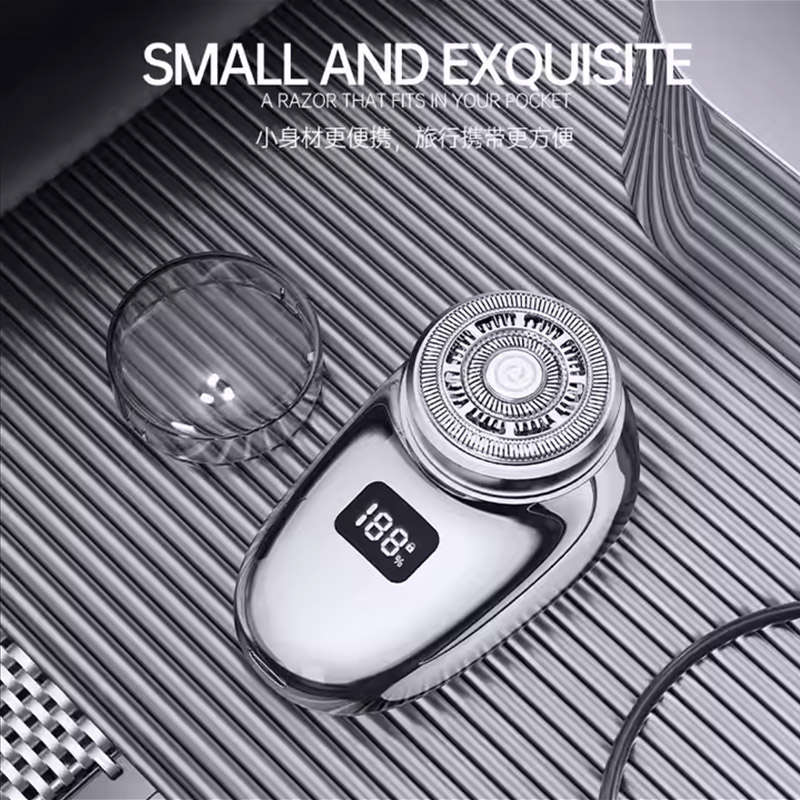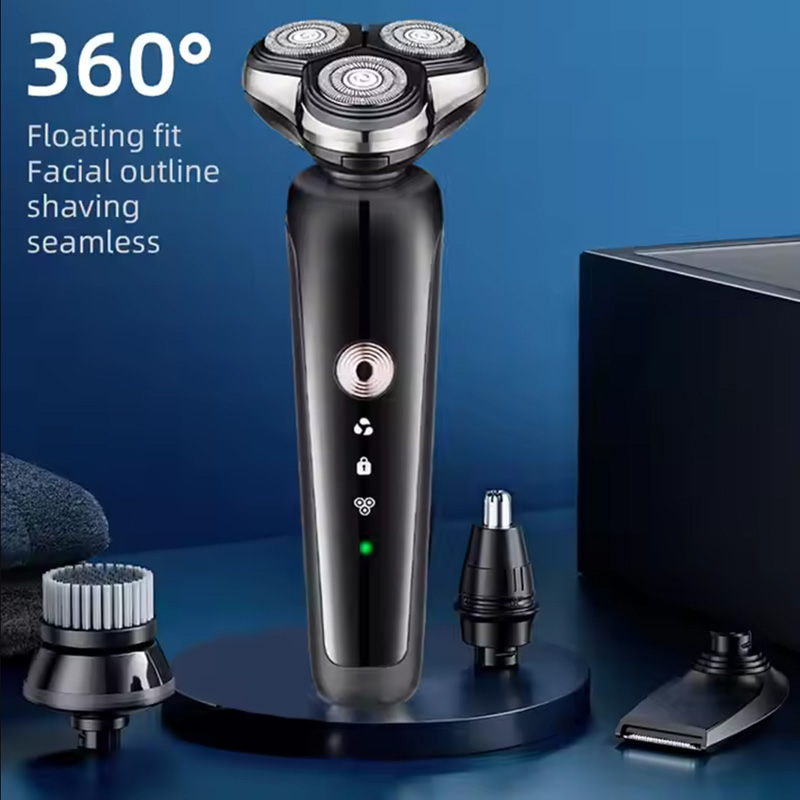
Imagine this: It’s a fresh morning in 2025. You’re in front of the mirror. Coffee’s in your hand. You’re thinking about your grooming habit. That tough stubble looks back at you. The clock keeps ticking. Do you pick up the old razor with a new blade? Or do you turn on that smooth electric shaver on the counter? For many guys like you—busy dads, workers rushing through the day, or just folks who want to stay neat without much fuss—the key question is cash. How much does this everyday routine really cost over the months? We’re looking close at the money side of electric shavers against regular razors. We pull from actual numbers and common situations. When we’re done, you’ll see better what suits your pocket and your skin.
Shaving goes beyond just appearing nice. It’s a routine that piles up. Consider it—you could shave 200 to 300 times each year if you aim for that neat look most days. Over ten years, that’s a ton of shaves. A low-price buy at first might become a cash drain with endless replacements. But a larger start cost could save you lots down the line. And with prices still rising in 2025, every bit helps. We’re not using fuzzy guesses here. We’ll split it with typical prices from fresh market info. Electric shavers go from $60 for basic ones to $300 for top models. Regular razors start cheap but add up with blade packs at $3 each or higher.
Cost isn’t the only thing, though. Your skin kind matters too. If you get red easily, that added money on a soft electric type might mean less doctor visits. Or if you travel often—like my friend who flies for work twice a month—a easy-to-carry choice beats packing creams and blades. Let’s dig into the details.
Electric shavers give you that first price surprise. But they do well over time. On average, a good men’s electric shaver in 2025 costs about $150 to $250. Simple ones drop to $60. Fancy ones with extras like auto-clean bases go over $300. Look at a middle one: it has a strong motor—say, 10W for steady work—and a battery that holds up to 3 hours per charge. So you don’t search for plugs during a shave.
What about upkeep? That’s where the money stays low. New heads or screens run $25 to $50 every 12 to 18 months. It depends on how much you shave. If you do it daily, count $30 a year at most. No creams, gels, or foams needed—dry shaves are usual. Some types work wet too. Over five years, you might spend $200 to $300 total after the buy. That’s little compared to blade stacks.
Honest story: I recall a pal who changed to electric after years with hand razors. He doubted it first, spending $180 on one with comfy handles and auto settings for beard thickness. But after two years, he’s saved enough on blades for a short trip. And the ease? No cuts on quick mornings. Electric shavers like these, with tough steel or ceramic parts, just last. They cut trash and bother.
Sometimes I wonder why more guys don’t switch sooner. Y’know, habit’s hard to break. But the numbers don’t lie.
Regular razors seem like a deal at the start. A okay handle costs $10 to $20. A blade pack? About $15 for four or five. But the trick is: blades get dull quick. If you shave daily, you change them weekly to skip pulling and red skin. That means $3 to $5 per blade usually, or $150 to $260 yearly just for refills, from 2025 averages.
Add the other stuff. Shave cream or gel is $5 to $10 a can, good for a month or two—add $50 a year. Lotion or balms for burn? Easy $20 more. Over five years, it’s $800 to $1,500 all in. Much higher than electric when you count the repeat buys. Sure, throw-away ones are lower at $1 to $2 each. But they last less—maybe four shaves—and fill the bin, bad for earth and wallet.
I’ve watched it happen: a work mate stuck with his many-blade razor, sure it was “cheap.” But he tracked his costs for a year—blades, foams, all of it. He saw he could have got three electric shavers with that money. And the skin troubles? Always. Regular razors are great for tight shaves, following face shapes for that soft feel. But the ongoing costs creep up.
It’s funny how small buys add up, right? Like coffee runs—seems nothing, but wow over time.
To show it plain, let’s look at the figures next to each other. Say daily shaves for a normal guy. Here’s a five-year split with 2025 averages:
| Category | Electric Shaver | Traditional Razor |
| Initial Cost | $150–$250 (mid-range model) | $10–$20 (handle) |
| Annual Maintenance | $30 (replacement heads) | $150–$260 (blades) + $50 (creams) |
| Five-Year Total | $300–$500 | $800–$1,500 |
| Per Shave Cost (Year 1) | ~$0.50 | ~$0.55 |
| Long-Term Savings | High (minimal ongoing buys) | Low (constant refills) |
Spot the difference? Electric takes the lead after the first year. Especially if you get a lasting one with good battery. These are just typicals—your use changes it. If you shave only twice weekly, regular might win on money. But electric is better for ease always.
Quick aside: In spots like Saudi Arabia, shaving tool prices are close to world ones (with shipping tweaks). The calc stays the same.
I added a few more rows to that table last time I checked my own costs. Helps see the big picture.
Cash speaks loud, but don’t skip the other parts. Electric shavers cut time—no foam, just hum and finish in under five minutes. Great for that fast ride to work. They’re nicer on touchy skin too, with options like speed changes and guards that lower burns and lumps. Info from shave experts says electrics drop red by up to 50% for guys with curly hair who get bumps.
Regular razors? They get the tightest shave, especially fresh blades, for a clean look that sticks longer. But setup time builds—wet your face, put cream, clean blade. If your method’s wrong, cuts happen. Yet for some, it’s a calm thing, like making good coffee.
From what I’ve seen, using both is smart. Electric for busy days, hand for weekend full cleans. Whatever, pick what matches your skin—a rough shave messes the whole day.
Oh, and here’s a bit off track: Have you noticed a solid shave lifts your mood? Like when I got ready for a key talk and felt ready to win. Small stuff matters.

For electric shavers that mix quality and price well, SUOKE Electric shines. From Yiwu, China, this firm focuses on care tools. They make shavers with strong 10W motors, steel or ceramic heads that last, and batteries up to 3 hours. Their builds follow face shapes for quick, easy shaves, with smart changes and comfy holds. With CE and ROHS stamps, SUOKE’s items go global, with good after-help like no-cost returns for bad quality. If you want a home set or lots for shop, their custom choices make it simple. Liked by stores in India and sellers overseas, SUOKE gives that high-level shave without high cost.
They’ve got stories from users too, like a big shave chain cutting costs with their tough heads. Makes you think they’re onto something.
Comparing electric shavers to regular razors comes to your way of life and future figures. Electric does better for long saves, ease, and skin care. Razors stay strong for super tight finishes and low start price. Figure your sums, think of your habits, and you’ll choose right. In any case, a wise pick keeps you neat without emptying your cash.
Electric shavers hit higher first—about $150–$250—but save over five years at $300–$500 all. Razors begin low but reach $800–$1,500 with blade buys and creams.
Electric ones are softer, cutting burns and lumps by up to 50%, good for easy-red skin. Razors might bother more but give tighter shaves with good creams.
Electric is best for carrying—no creams, charge and leave. Razors go anywhere but need add-ons like gels, raising bother and price.
Electric heads hold 12–18 months at $25–$50 each. Razor blades swap weekly, costing $150+ yearly for every-day shavers.
Razors win for soft smooth, but new electrics with strong motors and many blades get very close, especially daily.